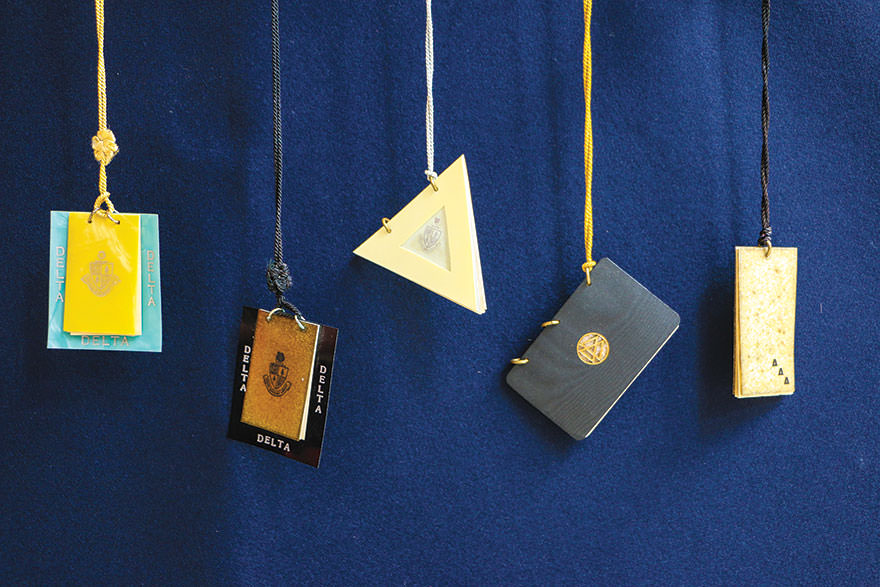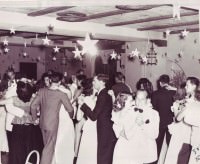 By Archives Manager Beth Dees Applebaum, Texas Christian
By Archives Manager Beth Dees Applebaum, Texas Christian
It is an idea that conjures up visions of a bygone era. Dressed in elegant finery, young ladies whirl with their partners across the dance floor, small, colorful cards fluttering from their wrists. The archives of Tri Delta is fortunate to have an interesting and varied selection of these cards received from members and collegiate chapters over the years. But what were dance cards, and how and why were they used?
The tradition of dance cards appears to have begun in the 1700s in Vienna. The cards were a practical means of satisfying various points of etiquette, and their use spread into other parts of Europe and later the United States by the 1800s. Though customs for their use varied, they were often part of the social etiquette of dances and balls.
A dance card is a little book, often with a decorative cover, tied together with a cord that could slip onto a lady’s wrist. Some cards had a small pencil conveniently attached. The inside pages of the booklet might list the date, time and place of the dance and who sponsored it. Several of the inner pages would have blank numbered or annotated lines that ladies used to note their dance partners for a given dance. If the occasion included a dinner, the menu might also be included in the booklet. Dance card covers were created from a variety of materials, ranging from simple card stock with hand drawn artwork to more elaborate designs integrating metal, cloth, leather or celluloid, depending on what was popular at a given time and the budget of the event’s sponsors.
How might you have used a dance card? Specific rules and traditions varied by locality, but around the 1900s the etiquette was more strictly defined. In some circles, it might be considered impolite for you the dance more than two dances with the same partner because it meant that you were monopolizing that gentleman. The use of dance cards rose in popularity as dances became more important social gatherings, with its own particular etiquette. In some places, it was usual for young ladies to fill their cards with partners in the days prior to a dance. If an unwelcomed partner asked for an open dance, it would have been impolite for you to refuse him. However, if you were fortunate enough to have a full dance card, you could politely decline his offer to dance with a smile and apology. In some localities, ladies received their cards several days before the dance giving them plenty of time to fill their dance card. As a bonus, these little cards were a nice memento of the event. The use of these cards even worked its way into our language with phrases like, “Pencil me in ” and “My dance card is full.”
The Tri Delta archives has an extensive collection of dance cards that date from the early 1900s to the early 1950s. About half a dozen cards are on display in the museum area of Executive Office. Looking through the cards provides a fascinating glimpse into the lives of our members. From them, we can find the events they attended, people they interacted with, and what dances and music were popular at a given time. One card shows the dances penciled in by one gentleman, who was the member’s future husband. Together, the collections provide a look back at an interesting tradition.

